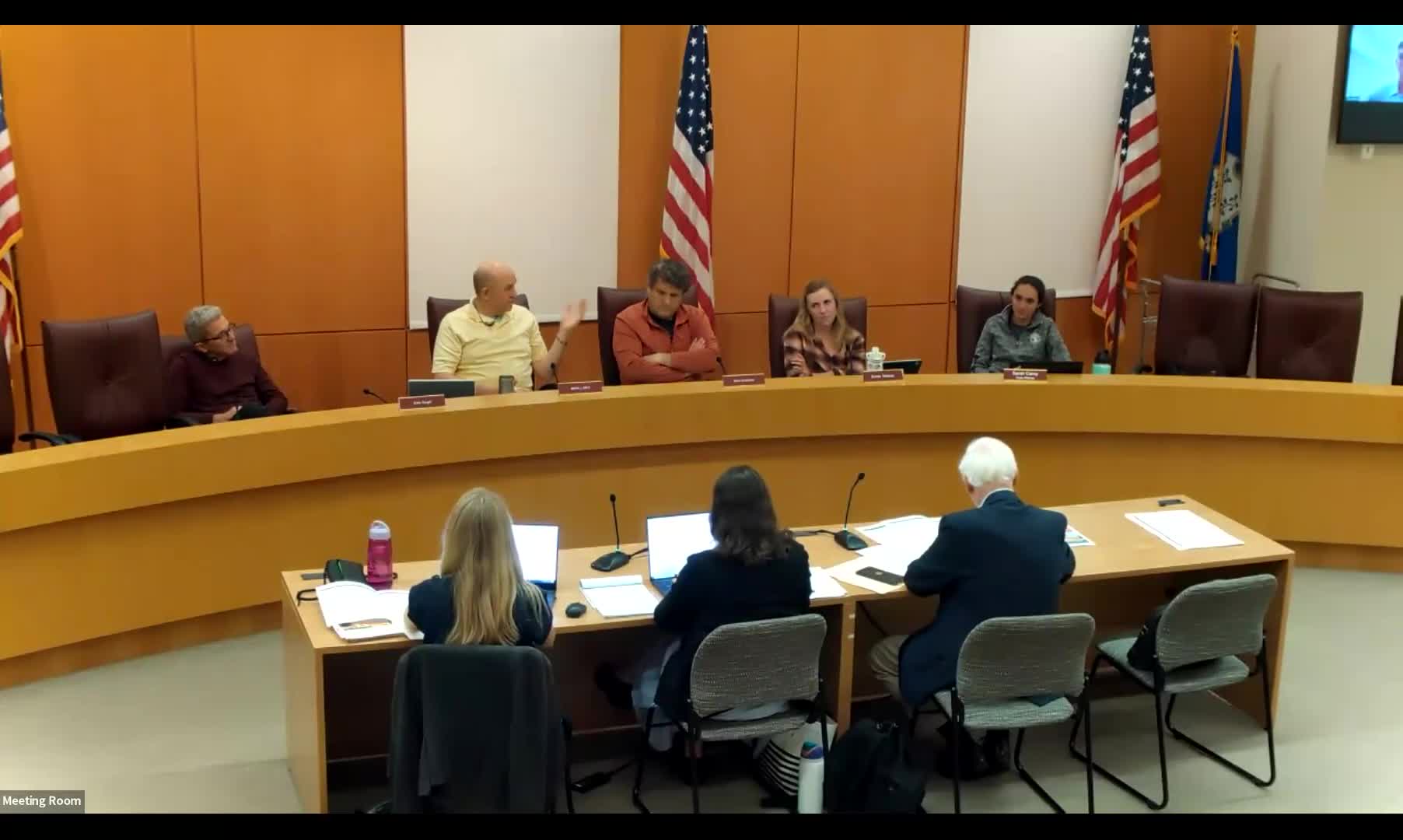Subcommittee debates how to manage institutional uses; options include clearer special-permit criteria or a formal overlay
October 09, 2025 | New Canaan, Fairfield, Connecticut
This article was created by AI summarizing key points discussed. AI makes mistakes, so for full details and context, please refer to the video of the full meeting. Please report any errors so we can fix them. Report an error »

Members of the Zoning Regulation Update Subcommittee spent substantial time on Oct. 8 discussing institutional uses, which commissioners identified as a recurring source of public concern. Commissioners and the BFJ team reviewed the current approach — municipal and institutional uses frequently proceeding by special permit with limited objective controls — and explored two broad regulatory strategies: (1) tighten and tailor the special-permit criteria specifically for institutional uses (coverage, height, traffic, noise, landscaping) and require robust site controls; or (2) establish an institutional overlay or uniform text standards so that future institutional uses would have explicit, consistent standards or would require rezoning into a narrowly defined overlay before proceeding.
Commissioners raised several practical examples during the discussion, including applications and community responses tied to St. Luke’s (parking/garage), Silver Hill-area properties, Waveney Park and other town-owned parcels, and donor-donated parcels held by local land trusts. Several members noted that municipal uses are currently treated differently from private institutional uses, and that municipal and public-school buildings often have broad exemptions — a point several commissioners said warrants review.
BFJ planners noted that the current special-permit standard for institutional uses in New Canaan lacks objective limits on coverage and height in some cases, which has led to repeated text amendments and public controversy in past proposals. The consultants and commissioners discussed practical guardrails that are used in other municipalities: coverage caps, height limits, floor-area ratio or a combination of coverage and open-space minimums, and special-permit criteria that explicitly address intensification of use, added campus parking, and traffic mitigation.
Commissioners emphasized the need for clarity for residents and applicants. One commissioner suggested the language “intentional, uniform standards for institutional uses” in public materials rather than using the technical term “overlay zone,” to avoid preemptive community alarm about rezoning. BFJ agreed to rephrase materials for the Oct. 23 workshop in plain language and to prepare options comparing tightened special-permit criteria versus an overlay approach.
Why it matters: Institutional uses — private schools, religious institutions, care facilities, large nonprofits — can expand footprint, add parking and increase traffic in otherwise residential neighborhoods. How the town controls those uses affects neighbors’ expectations, project outcomes and legal exposure.
Ending: BFJ will present a concise comparison of options (tailored special-permit criteria, overlay zone, or hybrid approaches) and examples from peer towns for the subcommittee’s December meeting and follow up with the town attorney as part of legal review.
Commissioners raised several practical examples during the discussion, including applications and community responses tied to St. Luke’s (parking/garage), Silver Hill-area properties, Waveney Park and other town-owned parcels, and donor-donated parcels held by local land trusts. Several members noted that municipal uses are currently treated differently from private institutional uses, and that municipal and public-school buildings often have broad exemptions — a point several commissioners said warrants review.
BFJ planners noted that the current special-permit standard for institutional uses in New Canaan lacks objective limits on coverage and height in some cases, which has led to repeated text amendments and public controversy in past proposals. The consultants and commissioners discussed practical guardrails that are used in other municipalities: coverage caps, height limits, floor-area ratio or a combination of coverage and open-space minimums, and special-permit criteria that explicitly address intensification of use, added campus parking, and traffic mitigation.
Commissioners emphasized the need for clarity for residents and applicants. One commissioner suggested the language “intentional, uniform standards for institutional uses” in public materials rather than using the technical term “overlay zone,” to avoid preemptive community alarm about rezoning. BFJ agreed to rephrase materials for the Oct. 23 workshop in plain language and to prepare options comparing tightened special-permit criteria versus an overlay approach.
Why it matters: Institutional uses — private schools, religious institutions, care facilities, large nonprofits — can expand footprint, add parking and increase traffic in otherwise residential neighborhoods. How the town controls those uses affects neighbors’ expectations, project outcomes and legal exposure.
Ending: BFJ will present a concise comparison of options (tailored special-permit criteria, overlay zone, or hybrid approaches) and examples from peer towns for the subcommittee’s December meeting and follow up with the town attorney as part of legal review.
Don't Miss a Word: See the Full Meeting!
Go beyond summaries. Unlock every video, transcript, and key insight with a Founder Membership.
✓
Get instant access to full meeting videos
✓
Search and clip any phrase from complete transcripts
✓
Receive AI-powered summaries & custom alerts
✓
Enjoy lifetime, unrestricted access to government data
30-day money-back guarantee

